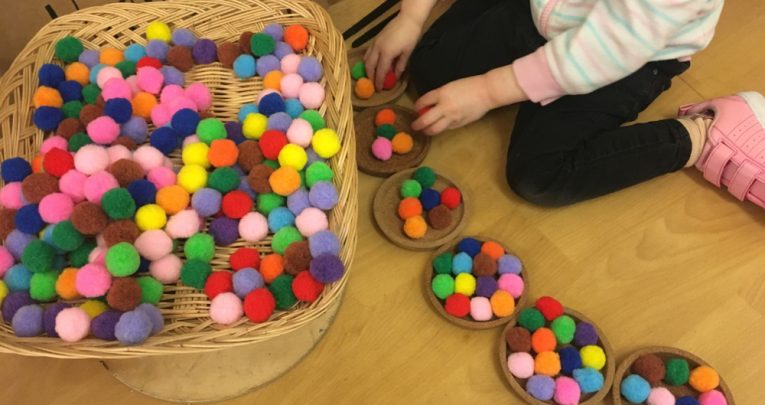3 Activities to Encourage Early Years Children to Take Part in Something Mindful Each Day

Laura England recommends learning with herbs and spices, and giving your children time to be mindful…

Encourage your children to take part in something mindful each day.
We love lavender!
You can’t beat using what nature has to offer as inspiration for invitations to play. Not only are natural materials freely available but they are also relevant to a child’s own experiences and offer a wealth of sensory opportunities.
We often collect items from our outdoor environment to create exciting enhancements; this allows children to explore items in their natural environment before collecting them to add to their play.
Lavender has been our herb of choice for the past couple of weeks – we’ve created both lavender rice (3 cups of rice mixed with 1 tbsp of purple paint and a handful of lavender) and lavender playdough, developing fine motor, problem-solving and communication skills; encouraging creativity and critical thinking; and providing insights into the natural environment.
To extend our exploration of herbs and spices, we also created cinnamon handprints and herb collages.
Practising mindfulness
I’ve recently become interested in mindfulness. Having had a go and seen the positive effects it had on my own wellbeing, I decided to look into mindfulness for children.
In my setting, we have some time after lunch where we try to offer activities that are relaxing and calming, such as colouring or creating patterns in sand.
For children, this is what mindfulness looks like; it’s about giving them space to relax and become absorbed in what they’re doing.
Try encouraging children to take part in something mindful each day. It can be as simple as taking notice of sounds outside, the taste of the fruit at snack time or the textures of the materials they play with.
Check out educationsvoice.wordpress.com for more information, or search for children’s yoga/meditation videos on YouTube.
Open-ended maths
 Do you offer open-ended maths provocations that allow children to use their ideas to develop problem-solving skills?
Do you offer open-ended maths provocations that allow children to use their ideas to develop problem-solving skills?
Recently, I set up a sorting provocation with different coloured pom-poms. I expected the children to sort the different colours into different dishes, but one little girl surprised me. She decided to place one of each colour in each dish; she was still sorting and developing her problem-solving skills but in her own way.
So, next time you set up a maths provocation, make sure it doesn’t have a ‘right’ and ‘wrong’ way to play.
When talking about big and small, provide a wealth of loose parts over plastic beads – children can then use their own ideas to explain which items are big and which are small (it isn’t always obvious when the items you provide are different shapes/lengths, etc).
Laura England is preschool leader at Blythe Bridge Day Nursery. Follow @littlemiss_ey and find more of her Teachwire articles here for other great ideas.











